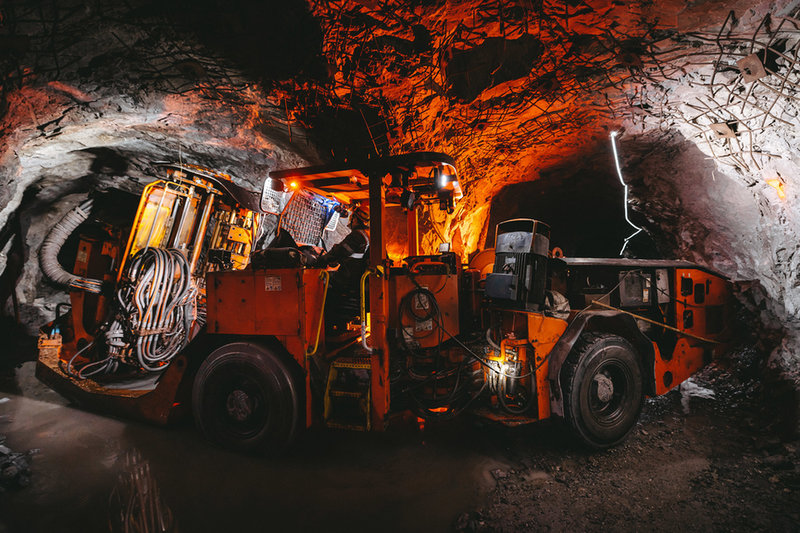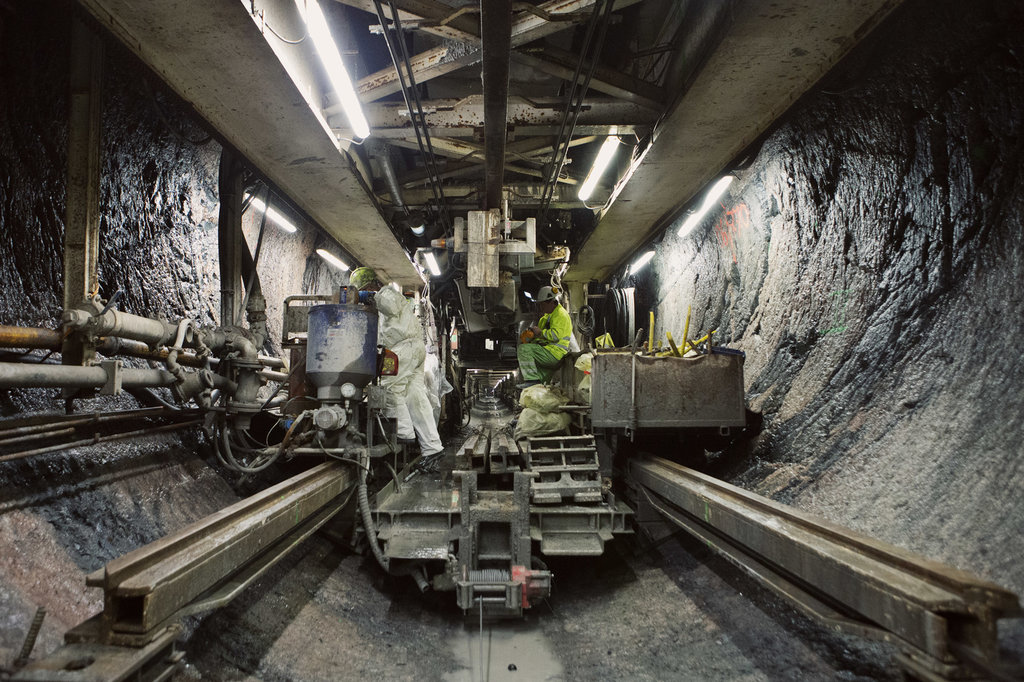Feature
Tunnelling technology looks to the future
Nnamdi Anyadike explores the world of tunnel boring, and the new wave of machines offering improvements on drilling and blasting.

Digitalisation promises much to tunnel bores. Credit: Mark Agnor via Shutterstock.
Tunnelling plays a crucial role in underground mining operations and a number of key technological breakthroughs are helping to revolutionise the industry, including ‘intelligent’ tunnel boring machines (TBMs). These machines have already simplified and expedited the tunnel construction processes, but recent advancements have seen TBMs integrate artificial intelligence, advanced sensors, and real-time data analytics to optimise excavation, minimise downtime, and enhance safety.
The result is that TBM tunnelling is increasingly outcompeting its older, more traditional ‘drill and blast’ rival for use in hard rock tunnels. However, TBM tunnelling is not a straightforward improvement, and trade-offs with drilling and blasting remain. One major advantage for TBMs is their ability to excavate tunnels with both precision and efficiency, which also helps with drilling safety and keeps surface disruption to a minimum. These advantages make TBM tunnelling generally ideal for larger mine projects in stable rock formations. On the other hand, though, the more conventional drill and blast method is often the more viable option for smaller projects or tunnels with complex geological conditions.
New tunnelling techniques in old places
In Chile, TBM technology is on course to revitalise the copper mining giant’s Chuquicamata mine. Last year, the country’s state-owned copper firm Codelco and the Japanese equipment provider Komatsu sealed an agreement to test out Komatsu’s new electric-powered TBM at the mine in 2024. The machine can manoeuvre round small curves, reverse and pass intersections in hard rock tunnel excavation.
“The result is a new excavation option that reduces the creation of greenhouse gases and particulate matter emissions for an improved underground environment that requires less ventilation than other methods. At the same time, it significantly increases the productivity of personnel associated with tunnel excavation work compared to conventional methods,” Komatsu stated in announcing the collaboration.
This is unlike drill and blast operations where crews must exit the tunnel during blasting for safety.
Meanwhile, the US based TBM manufacturer Robbins, together with Mexican silver mine owner Fresnillo and machinery firm Topo, has developed a ‘rectangular’ TBM. Known as the MDM5000 (Mine Development Machine), it was developed for use in rock compressing with a pressure of up to 200MPa. It utilises the same disc cutter technology that was first proven on traditional, circular TBMs.
The machine offers a number of advantages over drill and blast methods. It is advertised as advancing at roughly twice the speed of a drill and blast heading, with rates up to 52m in one week and 191m in one month. This results in smooth tunnel walls, less overbreak and minimised ground support. “The increased advance rates are partly due to the machine’s continuous progress. This is unlike drill and blast operations where crews must exit the tunnel during blasting for safety,” the Robbins Company states.
Digitalisation for tunnel borers and underground data gathering
While new tunnel borers promise an improvement on existing methods, digitalisation offers entirely new approaches. Building Information Modelling (BIM), which enables the digital modelling of tunnel projects, is also coming to the fore and in the next few years, BIM will be gradually introduced in all EU member states. “BIM is a very efficient method of information modelling, allowing optimisation of management activities. It can be implemented for mining damages, using available methods, algorithms and software,” said a Global BIM Network document. By leveraging BIM, tunnel engineers can visualise the tunnel design and detect potential clashes or design flaws. In recent years, LiDAR, ground-penetrating radar, and advanced imaging technologies have also revolutionised map subsurface geology.
But does miniaturisation offer anything to tunnel borers? British start-up HyperTunnel proposes a future in which much smaller, roughly 3m-long robots shaped like half-cylinders zoom about underground via predrilled pipes, around 250mm in diameter. Once inside, the ‘bots’ would penetrate into the surrounding earth and carve out small voids that would then get filled with concrete or some other strong material. Confident in his product, HyperTunnel’s joint chief executive Steve Jordan told New Civil Engineer: “Current tunnelling technology has reached its physical limits. It’s too expensive, too slow, and still too risky.”

Newer tunnel bores offer greater precision. Credit: Erika Gerdemark/Bloomberg via Getty Images.
A standard HyperTunnel bot is wheel mounted and battery driven, with a central compartment that can contain a range of tools. This includes the ‘HyperBit’, which is an extendable, metal tipped plastic nozzle. It comes with a one-way valve that can be drilled out through the pipe wall to allow access to the local geology. A single bot can install dozens of these nozzles, which can then collect and feedback data on soil moisture content, chemical composition and temperature. More ‘botways’ can then be installed to collect even more data. The aim is that eventually enough data can be collected to construct an accurate virtual reality model of the proposed tunnel’s geology and identify any areas that may pose particular problems. Jordan continues: “An individual bot can only work on a small scale, but if you have thousands of bots working simultaneously, then progress is extremely rapid. And these tools are working to an accuracy of tenths of a millimetre.”
Thermal rock cutting
Meanwhile, a rival drilling company, the San Francisco start-up Petra, has developed a thermal cutting device that uses a superheated fluid, rather than a plasma torch, to bore through the hardest rock. Last year, it announced the successful completion of a 20ft demonstration tunnel through ‘the hardest rock on earth’. Petra claims that its semi-autonomous thermal drilling robotic system, called ‘Swifty’, can create tunnels through any geology.
The company is also working on a solution to tackle extremely soft or water-logged soil at the other end of the spectrum. In April, Petra introduced the Petra Platform: the “world’s first” hybrid-powered all-geology trenchless multi-tool. The company boasts that its technology can “bore a 30-inch diameter tunnel 14 feet through hard abrasive granite in 4 hours.”
GlobalData reports that in the last three years alone, there have been over 48,000 patents filed and granted in the mining industry including magnetic field-based vehicle positioning, tunnel safety optimisation and smart mining alarms. Once these innovations - and more - become more widely incorporated into the industry over the coming years it is likely to transform the sector beyond recognition.